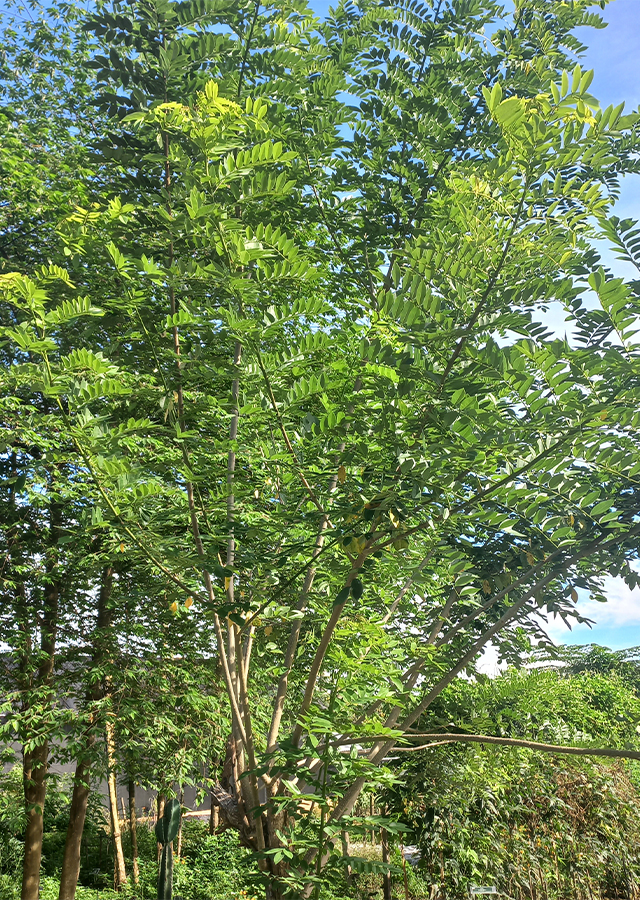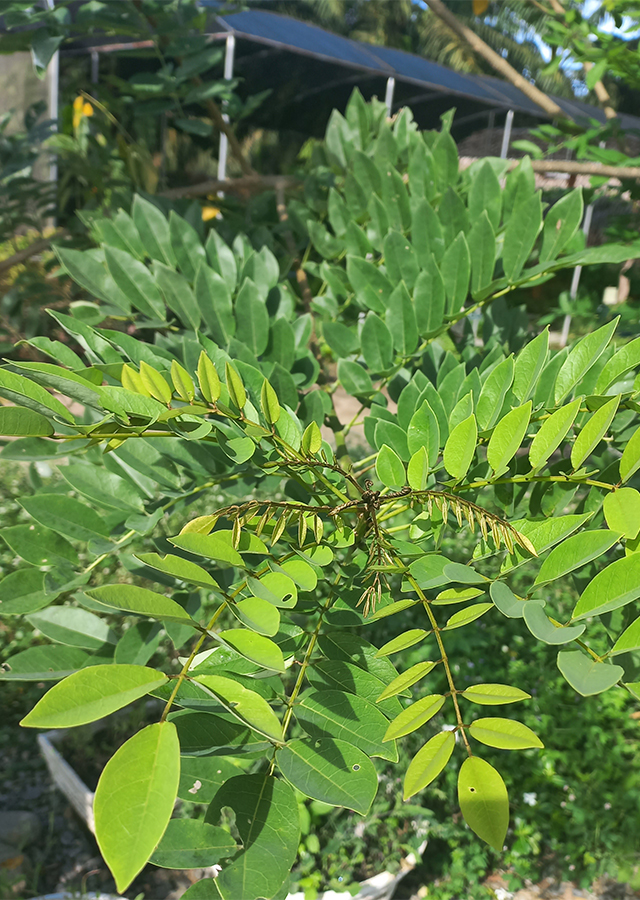Traditional Herbs from Gliricidia sepium
rheumatism
- Take enough leaves and wash them until clean.
- Crush the leaves until they become a paste.
- Apply as a poultice for rheumatic pain.
itch_and_wounds
- Prepare the leaves, bark and roots gamal to taste.
- Wash all the ingredients thoroughly.
- Grind all the ingredients until smooth.
- Apply to itchy skin and wounds.
What is Gliricidia sepium Looks like??



Parts of Gliricidia sepium that could be used
- Leaves
- Bark
- Roots
Gliricidia sepium Distribution
Gamal originates from Central America, and has long been cultivated and naturalized in Mexico, Central America and northern South America. This plant was also introduced to the Caribbean and West Africa to Asian countries including Indonesia, Malaysia, Thailand and India. Its distribution in Indonesia covers almost the entire archipelago, such as Sumatra, Kalimantan, Java, Madura, Bali, Nusa Tenggara, Sulawesi, Ambon, Maluku, Ternate, Tidore and Irian Jaya. Gamal is a multipurpose tree that is widely cultivated for various functions. In the past this plant was often used as a shade tree for plantation crops, but now gamal is also used as a hedge plant, ornamental plant, green manure, animal feed, erosion prevention plant, reclamation of bare land and stabilizing the soil, as well as a vegetable (its flower part). The wood is widely used as a material in the production of charcoal, furniture, agricultural equipment. Apart from that, this plant has other important benefits, namely as an ingredient in traditional medicine, where the people of Guatemala have used the bark and leaves to treat skin diseases. Gamal can also be used in the cosmetics industry as a hair conditioner and skin softener.Agroecology of Gliricidia sepium
This plant can grow well in damp areas to dry climates and is often found on roadsides, river banks, flood plains, fields, gardens, yards as hedges and open places, at an altitude of 1-2,000 m above sea level. This type can grow well on various types of soil in areas with annual daytime temperatures in the range of 15-30 °C, but can tolerate 12-44 °C, average annual rainfall in the range of 1,200 - 2,300 mm, but tolerates 600-3,500 mm, the degree of soil acidity (pH) is in the range of 5.5-6.2, but is tolerant of 4.5-8.
Morphology of Gliricidia sepium
- Taproot, many fibrous, white-brown.
- Stem erect, round, crusty, woody, grayish brown, easily cracked, skin surface slightly rough, small cracks, rarely lenticels.
- Compound leaves , imparipinnate (odd pinnate), the leaves are arranged alternately, consisting of around 13 - 21 leaflets, the leaf blades are elliptical to oblong, the base is obtuse to rounded, pointed at the tip, flat at the edges, dark green on the upper surface, and light green on the lower surface, glabrous (no hairs). Stem 8-12 cm, cylindrical, glabrous, thickened at the base, light green.
- The flowers are pink and tend to fade to pale purple as they age and there is a pale yellow color in the middle. The inflorescences are compound, coral-shaped, 2-sex, emerging from the axils of the leaves white.
- Pod-type fruit, flat, 10-11.5 cm long, contains 3-19 seeds, green.
- Seeds are ellipsoid, small, shiny, brown to black.
Cultivation of Gliricidia sepium
- Vegetative propagation (stem cuttings/branches) and generative (seeds).
- Propagation using cuttings is done by selecting stems or branches that are neither too old nor too young, from a parent tree that is not affected by disease, with a diameter of 1, 5-2 cm, 15-30 cm long, then cut at an angle and immediately planted in the planting medium.
Gliricidia sepium, more details :
Chemical Content of Gliricidia sepiumFormosin, formononetin, gliricidin-6a-gliricidol-9a, medicarpin (pterocarpan), 7,4'-dihydroxy-3'-methoxyisoflavin, 2'O- methylsepiol, tannin, trihydroxyflavone, stigmastanol glucoside, 3'4-dihydroxy-trans- cinnamic acid octacosylester 2, methyl�3(E)�pentenyl ether, 3�methyl�2�butanol, 3�methoxy hexane, 1�(1�ethoxyethoxy)�2�hexene, 2� decanol, coumarin, hexadecanoic acid, essential oils (pentadecanal, (Z)-phytol, methyl linolenate, nonanal, myrtenol, nerolidol).
Benefits of Gliricidia sepium
Medicine for hair growth, skin softening, treating eczema, scabies, itching, prickly heat, boils, treating wounds and burns, bruises, colds, coughs, colds, fatigue, fever, sprains, broken bones, headaches, rheumatism, skin tumors , urticaria (skin disease such as hives), smear on the skin to repel insects, fight bacterial and protozoan infections.
Simplisia of Gliricidia sepium
Another Facts for Gliricidia sepium :
Synonym of Gliricidia sepiumGliricidia lambii Fernald, Lonchocarpus roseus (Mill.) DC, Robinia sepium Jacq.
Habitus of Gliricidia sepium
Tree. Shrubs or small trees, annual, height ranging from 2-15 m
Habitat of Gliricidia sepium
- Riverside", "Coast", "Roadside", "Bush Area", "Grassland", "Land
No comments:
Post a Comment